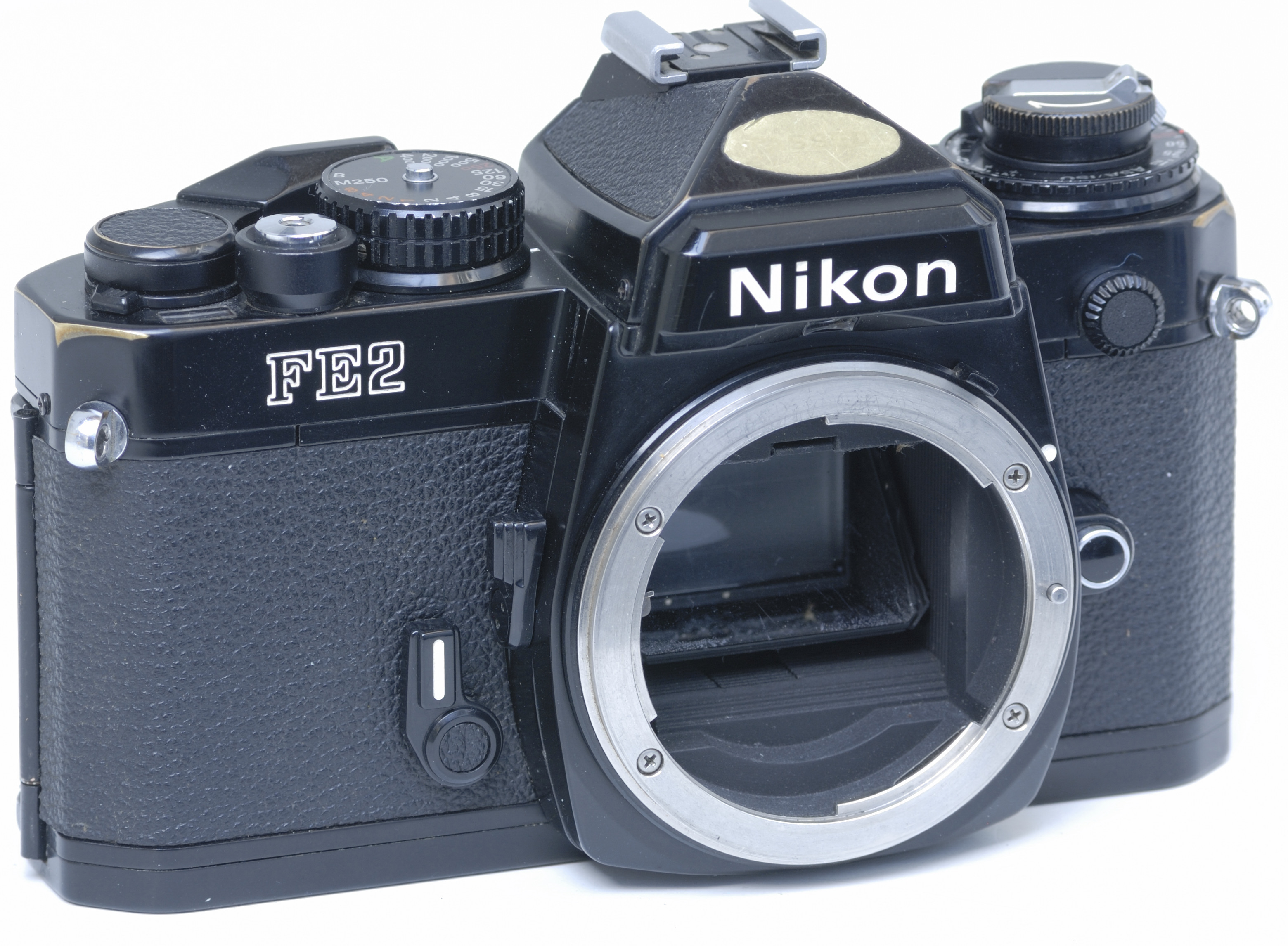Nikon Fe Serial Number Year Chart

Nikon Lens Versions and Serial Nos. Nikon Ai conversion kit number for this and later versions. With year of Dragon FM2N: 0001/2000.
Nikon F3 serial numbers (assisted by Ron Volmershausen and John Laughlin) The Nikon F3 bodies were produced from March 1980 till October 2000; the Nikon F3HP was produced since March 1982; the Nikon F3/T (titanium-champagne) since December 1982; the Nikon F3/T black since September 1984; the Nikon F3AF and the Nikon F3P since April 1983; the Nikon F3Limited since October 1993 If you take off the back door you'll see a production code (above 00AF); the first two digits may refer to the year and month. Here 0 for October and the 0 for 1980. The first digit means: 1 = Jan.; 2 = Febr.; 3 = March; 4 = April; 5 = May; 6 = June; 7 = July; 8 = Aug.; 9 = Sept.; O = Oct.; N = Nov.; D = Dec. The second digit means: 0 = 1980/1990/2000; 1 = 1981/1991/2001; etc. The meaning of the two letters is (yet) unknown.

A Nikon FM2 in black finish The Nikon FM2 is an advanced semi-professional, interchangeable lens,, (SLR) camera. Kingroot apk download 6.0.1. It was manufactured by Nippon Kogaku K.
(today ) in Japan from 1982 to 2001. The original camera was released with some incremental improvements (such as a higher flash-sync speed) in 1984 and this later version is commonly referred to as the FM2n (for 'new' due to the N preceding the serial number on the rear of the top plate) although both versions are labelled as the FM2 on the front of the camera body.
The FM2 originally used an advanced Nikon-design, metal-bladed, bearing-mounted, vertical-travel with a (then unheard-of) speed range of 1 to 1/4000th second plus Bulb, plus a fast flash X-sync of 1/250th second, all of which were possible even without battery power. (Actually the first models were with a flash X-sync 1/200th second) It had dimensions of 90 mm (height), 142 mm (width), 60 mm (depth) and a weight of 540 g. It was available in two colors: black with chrome trim and all black.
The introductory US list price for the chrome body only (no lens) was $364. By 1988, it listed for $525; in 1995, it plateaued at $745 and remained there until discontinued. Note that SLRs usually sold for 30 to 40 percent below list price. The FM2 is a member of the classic Nikon compact F-series SLRs and was built using the same material - copper-aluminium-silicon (copper-) alloy - as the earlier (introduced in 1977) and (1978) cameras.
The and of 1983 also had this silumin alloy construction, along with the limited production of 2001, although the design of the housing differs from model to model. Contents • • • • • Features [ ] Like its predecessor, the FM, the FM2n has a long-standing reputation for reliability and durability. It has an extremely strong body of copper-aluminum-silicon () alloy. The FM2's film transport consists of high-strength hardened metal gears and moving parts, mounted on clusters of ball bearings. The camera's precision-tapered, high-strength vertical metal shutter blades were fabricated originally of lightweight titanium (later production FM2 shutter blades were made of aluminum), while the mirror/shutter mechanism rides on self-lubricating bearings. The mirror linkage uses the same mechanism found on Nikon's professional F2, with some modern improvements designed to further reduce effects of vibration and mirror bounce.
The FM2 also features Nikon's famous close tolerance assembly and minimal space lubrication, meaning that it will reliably operate in temperature extremes of −40 °C to +50 °C. The FM2/T titanium version. The FM2 accepts all lenses that support the Automatic Indexing (AI) feature introduced in 1977.
The Nikon-made AI lenses of this type are the AF-S Nikkor, AF-I Nikkor, AF Nikkor D, AF Nikkor, Nikkor AI-S, Nikkor AI and Nikon Series E types. Nikon’s most recent 35 mm film SLR lenses, the AF Nikkor G type (introduced in 2000) and the AF Nikkor DX type (2003) will mount but will not function properly. IX Nikkor lenses (1996), for Nikon's (APS) film SLRs, must not be mounted, as their rear elements will intrude far enough into the mirror box to cause damage. During the early 1980s, Nippon Kogaku manufactured approximately 70 different types of manual focus Nikkor AI-S and Nikon Series E branded lenses. They ranged from a Fisheye-Nikkor 6 mm f/2.8 220° circular fisheye to a Reflex-Nikkor 2000 mm f/11 super telephoto.
The AF-S Nikkor, AF-I Nikkor, AF Nikkor D and AF Nikkor autofocus lenses will work for manual focus only. Accessories for the FM2 included the Nikon MD-12 motor drive (automatic film advance up to 3.2 frames per second), the Nikon MF-16 databack (sequential numbering, time or date stamping on the film), and the Nikon SB-15 (guide number 82/25 (feet/meters) at ASA/ISO 100) and Nikon SB-16B (guide number 105/32 (feet/meters) at ASA/ISO 100) electronic flashes.